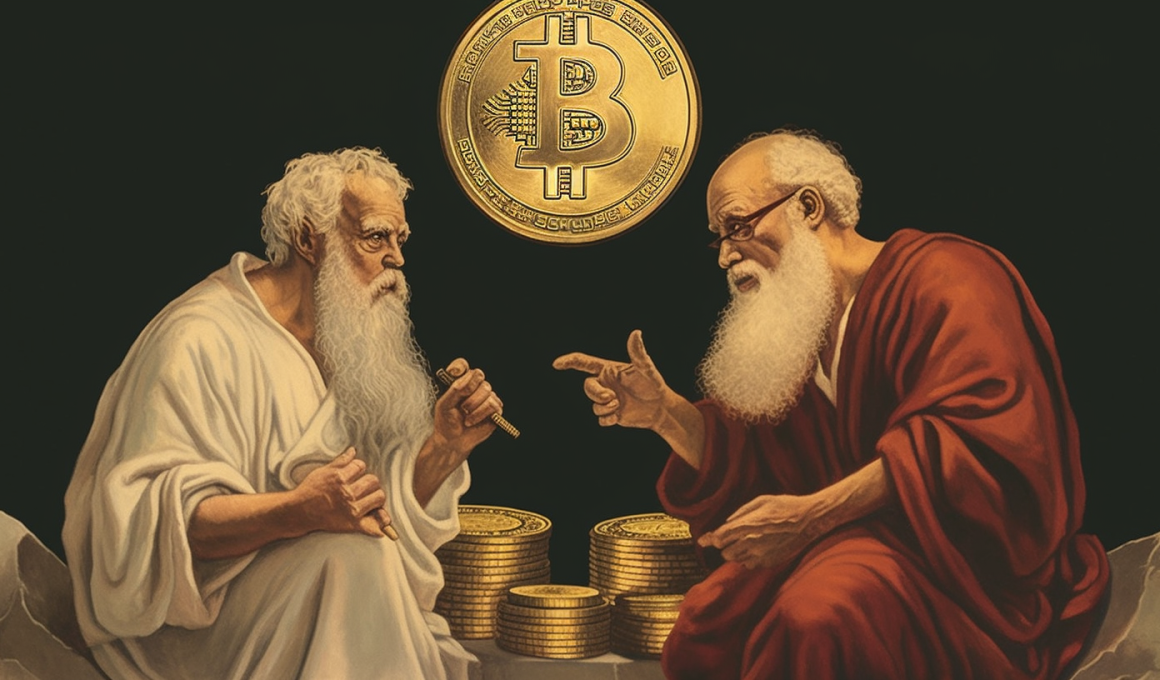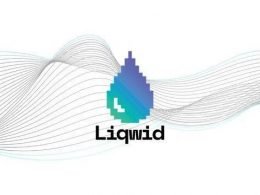Cardano and Solana have emerged as influential players in the evolving cryptocurrency landscape, each competing for a stake in future decentralization. These blockchain networks are supported through their native cryptocurrencies — ADA tokens for Cardano and SOL tokens for Solana.
Positioned as alternatives to the all-popular Ethereum, Cardano vs Solana is a potent duo that each claims to be superior in affordability and transaction processing. These blockchains rely on proof-of-stake consensus mechanisms for validating transactions. Cardano and Solana have integrated decentralized applications called Dapps and smart contracts.
Despite these similarities, a lot of competition differentiates these two platforms. Cardano’s development is centered around enhancing scalability and security measures. Conversely, Solana’s development team is focused on achieving unparalleled transaction speeds and lowering operational costs. This article is an in-depth comparison of Solana vs Cardano, including the strengths and functionalities of the two blockchain platforms.
Cardano (ADA): Revolutionizing Blockchain Through Sustainability
Cardano (ADA) is a decentralized blockchain platform created as an alternative to traditional proof-of-work (PoW) networks like Bitcoin and Ethereum. It was established in 2015 by Charles Hoskinson and Jeremy Wood, both former Ethereum developers. In essence, the platform aims to address the challenges of scalability, security, interoperability, and sustainability in the blockchain space.
The blockchain’s native cryptocurrency is called ADA, named after Augusta Ada King, Countess of Lovelace, often recognized as the world’s first computer programmer. ADA plays a crucial role in Cardano’s proof-of-stake (PoS) consensus mechanism, which rewards users participating in stake pools for their contributions to the network.
Charles Hoskinson, one of Cardano’s founders, was a co-founder of Ethereum. Despite Ethereum’s success, Hoskinson envisioned a blockchain with greater environmental sustainability and broader application potential. This vision materialized as Cardano, a PoS blockchain known for its eco-friendly features and versatility in supporting various digital products.
In 2021, Cardano underwent a significant upgrade known as the Alonzo hard fork, which introduced smart contract capabilities to the platform. This enhancement opened the door for developing decentralized applications (DApps) and decentralized finance (DeFi) projects on the Cardano network, further expanding its utility and appeal in the blockchain ecosystem.
Solana (SOL): Transforming Blockchain with Speed and Innovation
Solana is a blockchain platform created to host decentralized applications in 2017. When it comes to popular cryptocurrencies like Bitcoin and Litecoin, they use a proof-of-work algorithm to establish blocks in their chains. This process relies on miners to determine the next block. However, it is slow and resource-intensive, consuming substantial energy.
However, unlike its predecessors, the Solana consensus mechanism utilizes proof of history and proof-of-stake. The PoF system is where staking determines the next block. This involves holding staked tokens as collateral until validators agree on the next block, offering a more energy-efficient alternative to the traditional proof-of-work mechanism.
Such a unique combination of PoS and PoW systems allows Solana to achieve remarkable transaction speed, capable of processing up to 50,000 transactions per second. The platform’s impressive speed sets Solana apart from other blockchains, addressing a key concern in blockchain technology.
This performance has contributed to the popularity of the cryptocurrency associated with the Solana blockchain, also named Solana (SOL). In 2021, SOL experienced an astounding 12,000% surge and, at one point, held a market capitalization exceeding $66 billion, making it the fifth-largest cryptocurrency by market capitalization at that time.
Cardano Vs Solana: Key Differences and Features
1. Blockchain Architecture
Cardano’s architecture is bifurcated into the Cardano Settlement Layer (CSL) and the Cardano Computational Layer (CCL). The CSL handles ADA token transfers and ledger state, while the CCL facilitates smart contracts and decentralized applications. The versatility of Cardano allows different CCLs to be tailored for specific regulatory, security, or privacy requirements. In terms of security, Cardano implemented the Ouroboros protocol, pioneering proof-of-stake functionality with added security measures.
On the other hand, Solana adopts a single-layer architecture, leveraging Proof of History (PoH) to achieve notable performance and scalability. PoH encodes time into the ledger through a verifiable sequence of hashes, enabling Solana to process transactions in parallel with milliseconds of finality. Solana’s innovative approach extends beyond PoH, employing technologies like Turbine, Gulf Stream, Sealevel, and Cloudbreak to optimize transaction processing and smart contract execution.
When it comes to Cardano vs Solana, Cardano’s layered architecture prioritizes enhanced security, while Solana’s single-layer design aims at simplifying the development of decentralized applications (dApps). The security aspect is underscored by Cardano’s implementation of the Ouroboros protocol, a pioneering proof-of-stake mechanism. Conversely, Solana focuses on transaction speed improvements through its proof-of-history mechanism, adding a timestamp feature to the proof-of-stake process.
2. Trading Volumes and GameFi
In the realm of GameFi and NFTs, Cardano and Solana are prominent blockchain platforms with thriving ecosystems. Cardano Crypto hosts various projects like CryptoPetz, Cardania, and Paima Studios, capitalizing on its low fees, high security, and interoperability attributes. The primary NFT marketplace on Cardano, the JPG store, has an lifetime trading volume of $204 million, according to Dappradar.
Solana, too, boasts a dynamic GameFi and NFT community featuring projects like StepN, Star Atlas, Genopets, and Solana Gaming. The platform supports multiple NFT marketplaces, including Magic Eden, OpenSea, SolSea, and Solanart.
Notably, OpenSea NFT Marketplace recently expanded its support to the Solana ecosystem, integrating Ethereum and Polygon NFTs. This move broadens the scope for various collections and projects, such as Solana Monkey Business, Degenerate Ape Academy, and Aurory, contributing to the overall trading volume on Solana.
3. Smart Contracts and Programming
Cardano primarily utilizes Haskell as its main programming language, known for its functional nature and emphasis on pure functions, ensuring consistent outputs for given inputs. This practical approach aids Cardano developers in crafting high-assurance code, promoting security and correctness in smart contracts.
Additionally, Cardano introduces its smart contract language, Plutus, built on Haskell. Plutus facilitates writing both on-chain and off-chain code in a unified language, employing the extended UTXO model to enhance addresses with logic and data.
In contrast, Solana adopts a multi-language approach, employing Rust, C, and C++ as its main languages. These compiled languages provide developers with performance, safety, and concurrency features, offering low-level control and efficiency.
Notably, Solana also supports smart contract development in Python through the Anchor framework. This allows developers to leverage Python syntax and tools in writing smart contracts, subsequently transforming them into Rust programs compatible with the Solana blockchain.
In a benchmark test conducted by AKQUINET, Haskell demonstrated commendable performance, being only 30% slower than Rust and significantly outperforming Kotlin by a factor of 6. While this comparison suggests that Solana’s programming languages may be perceived as more approachable and superior, it’s essential to consider specific project requirements and developer preferences when determining the suitability of programming languages for blockchain development.
4. Transaction Fees
Cardano transaction fee structure involves a minimum fee of $0.074 and an average fee of $0.17. Users also have the option to pay additional fees to the network validators. When it comes to Cardano transaction speed, the number hovers between 250 – 1000 TPS in theory (which may not always be true), while Solana has a rate of 3500 – 7000 TPS.
In contrast, Solana boasts an average transaction fee of $0.00025, significantly lower than Cardano. Moreover, Solana offers an optional additional fee for users who wish to expedite their transactions, calculated by multiplying the requested maximum compute units by the compute-unit price.
So, is Solana better than Cardano in terms of lower fees? Yes, it is. The efficiency of Solana’s proof-of-history protocol and its rapid transaction speeds contribute to a scenario where users rarely need to contend for block space. This stands in contrast to slower blockchain networks, where congestion can lead to increased competition and, subsequently, higher transaction fees. Solana’s streamlined process helps maintain remarkably low transaction fees, averaging just a fraction of a penny.
5. Development Systems
When comparing Cardano vs Solana, it’s essential to consider their development systems and approaches. Cardano is renowned for its scientific approach to blockchain development, led by the Input Output Hong Kong (IOHK) team. Comprising academics and researchers, this team has subjected the project’s whitepapers and code to peer review, resulting in a meticulously designed network continually undergoing refinement.
The focus on academic rigor extends to third-party security audits, ensuring a robust foundation for Cardano. Notably, partnerships with universities such as Stanford and Athens University of Economics and Business underscore the commitment to ongoing improvement, exemplified by the collaborative exploration of blockchain enhancements.
In contrast, Solana’s genesis involved experienced software engineers from notable companies like Qualcomm, Intel, and Dropbox. While lacking the same academic emphasis as Cardano, Solana’s development team possesses a formidable track record in constructing large-scale distributed systems.
The emphasis here is on practical experience and technical prowess. Although Solana may not boast the same level of academic backing, its developers’ qualifications are evident in their ability to create a high-performing blockchain.
6. Decentralized Finance (DeFi) Ecosystems
The Total Value Locked (TVL) in the decentralized finance (DeFi) ecosystems of Cardano vs Solana reveals a significant contrast. According to DefiLlama, Cardano reports a TVL of $161 million, while Solana boasts a substantially higher figure at $328 million. This considerable difference indicates that Solana has garnered more users and greater trust in its DeFi platform than Cardano.
Several factors contribute to Solana’s dominance in TVL. Firstly, Solana outpaces Cardano in speed and cost-effectiveness, making it a more attractive choice for investors seeking swift and economical DeFi transactions. Additionally, Solana hosts a more extensive array of DeFi protocols, numbering over 100, in contrast to Cardano’s 15.
Among Solana’s most popular DeFi protocols are Serum, Raydium, Saber, and Solend, offering functionalities such as trading, liquidity provision, stablecoin swapping, and lending/borrowing. On the other hand, Cardano’s DeFi landscape is still in its early stages, with promising protocols like SundaeSwap, Liquid Finance, and MinSwap emerging.
Conclusion
Cardano and Solana are both formidable contenders in the cryptocurrency and blockchain space, each with unique strengths and features. Cardano excels in its focus on security, sustainability, and academic rigor, while Solana stands out for its unparalleled transaction speed and cost-effectiveness.
The choice between Cardano or Solana ultimately depends on specific project requirements and user preferences, whether prioritizing security and academic backing or seeking lightning-fast transactions and lower fees. Both of these platforms contribute significantly to the evolving landscape of decentralization, offering diverse options for developers and users alike.











Solana is an awesome project with huge potential. Solana tries to solve the scalability issue by significantly enhances the scalability of blockchain technology, exceeding the performance in transaction speeds with minimal costs. The only strategic mistake Solana project was to give large share to FTX and SBF. FTX scandal + sell pressure created by dumping SOL to markets drove the price to bottom under $10, but Solana was able to recover due to its active & live blockchain with lots of development ongoing. Imagine if by utilizing Solana blockchain a company could send $100 Euros in a second under 1 cent cost price. What can this do? Definitely take out more expensive competitors of remittance services like Western Union and MoneyGram… There are lots of potential utilization and use cases of this innovative technology from finance and banking to medical field, logistics, supply chain and distribution. There are many other great projects and hidden gems in the crypto universe, check out and do your research on the following projects: Chainlink, PolkaDot, Near, MultiversX, Cosmos Hub, VeChain, Matic, Aptos, Quant, Aave, Parallel Finance, Moonbeam, Litentry, Phala, Acala, Thorchain, Arweave….
Solana SUCKS big time, either in REAL TPS (65k TPS is a complete JOKE, Solana can’t even do 10k TPS!) and the chain has many downtimes!
Take a look at REAL METRICS!!! https://chainspect.app/dashboard?range=30d&tag=layer_1&sort=maxTps&order=desc